- Home
- Isaac Hooke
Alien War Trilogy 2: Zeus
Alien War Trilogy 2: Zeus Read online
BOOKS BY ISAAC HOOKE
Military Science Fiction
Alien War Trilogy
Hoplite
Zeus
Titan
ATLAS Trilogy (published by 47North)
ATLAS
ATLAS 2
ATLAS 3
A Captain's Crucible Series
Flagship
Test of Mettle
Cradle of War
Science Fiction
The Forever Gate Series
The Dream
A Second Chance
The Mirror Breaks
They Have Wakened Death
I Have Seen Forever
Rebirth
Walls of Steel
The Pendulum Swings
The Last Stand
Thrillers
The Ethan Galaal Series
Clandestine
A Cold Day In Mosul
Terminal Phase
Visit IsaacHooke.com for more information.
ZEUS
ALIEN WAR TRILOGY
BOOK TWO
Isaac Hooke
This is a work of fiction. All characters, names, organizations, places, events and incidents are the product of the author's imagination or used fictitiously.
Text copyright © Isaac Hooke 2016
All rights reserved.
No part of this publication may be copied, reproduced in any format, by any means, electronic or otherwise, without prior consent from the copyright owner and publisher of this book.
www.IsaacHooke.com
Cover design by Isaac Hooke
Cover image by Shookooboo
table of contents
one
two
three
four
five
six
seven
eight
nine
ten
eleven
twelve
thirteen
fourteen
fifteen
sixteen
seventeen
eighteen
nineteen
twenty
twenty-one
twenty-two
twenty-three
twenty-four
twenty-five
twenty-six
twenty-seven
twenty-eight
twenty-nine
thirty
thirty-one
thirty-two
thirty-three
thirty-four
thirty-five
thirty-six
thirty-seven
postscript
about the author
acknowledgments
one
Trapped in the steel-walled tomb of the berthing compartment, Rade didn’t respond to the chief right away.
He was dumbfounded, and unsure he had heard right. Facehopper’s voice had suffered from severe digital warping—the Li-Fi protocol of the emergency lights offered far less bandwidth than the standard HLEDs, and if it was true that the Intrepid was torn in half, the crisis would have choked the messaging system to near breaking as panicked crew members attempted to contact friends and commanding officers. That Rade had reached Facehopper at all was because his signals were given a higher priority than most of the crew: during a crisis, MOTHs were often called upon to handle emergency situations such as repelling enemy boarding parties, securing breached decks, and so forth. Only the captain and senior officers had higher priority in the system.
“Say again,” Rade transmitted. “I thought you said the Intrepid was cut clean in half.”
“That’s exactly what I said,” Facehopper returned. “I’m transmitting a diagram of what’s left of the ship on our side.”
Rade activated his overhead map and accepted the chief’s incoming data request. He zoomed out on the map, and in moments half of the blueprints vanished longitudinally down the middle. A jagged line cut through the central compartments, testament to the impact of a mortar or other kinetic kill. Rade transmitted the data on to the rest of his platoon.
“Where are you, Chief?” Rade asked.
“On my way to the drop bay, actually.” Facehopper said. “I have the LC here on the line. He’d like to have a word.”
“Go ahead, Lieutenant Commander,” Rade said.
“Take a look at the route to drop bay five,” Lieutenant Commander Braggs asked over the comm.
Rade glanced at his overhead map. He saw a clear, unobstructed path to the bay. There were no hull breaches along the way, but several areas were marked in yellow, indicating regions of intense smoke.
“We can make it,” Rade said.
“The first few passageways between you and the hangar are clogged with smoke from an uncontrolled fire raging in hydroponics bay three,” Braggs said. “The containment systems haven’t kicked in. You’re going to have to wear your EABs... if you find yourselves overwhelmed at any time, there are three evac stations along the route. Looks like most of the lifepods haven’t fired yet.”
“We can make it,” Rade repeated.
“All right,” Braggs said. “I expected no less from you and your men. I’ll see you and Facehopper on the surface: I’m abandoning ship, taking down a Dragonfly laden with Marines. You probably won’t hear from me again until we’ve establish a forward operating base down there. Good luck.”
The chief spoke up a moment later. “I’m waiting for you blokes at the drop bay. Bravo Platoon is already here and suiting up. Don’t make me wait overly long. The remains of the ship are going to be entering the atmosphere real soon, now. Needless to say, none of us want to be aboard when that happens.”
“No, we don’t,” Rade said.
What the chief hadn’t mentioned was that Bravo resided in a proper troop barracks, much closer to the drop bay. When Team Seven had first arrived to find the Intrepid packed to the bulkheads with Marines, Braggs had the two platoons under his command draw straws for the prime berthing space. Unfortunately, Rade had picked the short straw, and their “berthing area” was actually a hastily converted, out-of-the-way storage compartment. It would take Alpha Platoon much longer to reach bay five.
“Well people, did you hear that?” Rade said. “Grab your EABs. We’re going to make a quick traipse to the drop bay.”
Rade launched himself from the bulkhead and hurtled across the compartment. He put out his hands in front of him and stopped his motion near the EAB locker. He pulled himself to the door and opened it.
He handed out the fifteen EAB—Emergency Air Breathing—apparatuses contained therein, along with the utility belts. The men rested the bulky equipment over their heads but didn’t slide the masks down over their faces quite yet. Harlequin didn’t bother to take one, of course—as the platoon’s only Artificial, he didn’t need one.
Rade held his own EAB between his elbow and ribcage for the moment, and shoved off toward the exit hatch. Not unsurprisingly, it didn’t automatically move aside. He tried to access the wireless interface in the adjacent panel via his Implant. No connection ports overlaid his vision: the system was completely offline. He detected no other active interfaces from any of the nearby compartments in the passageway outside either, as he would have under normal operating conditions.
“With the mains down,” TJ said. “You’re going to have to open it manually.”
Rade beckoned Snakeoil and Mauler forward. “Open her up.”
Mauler took down the panel beside the hatch, wrapped his hands around the thick release grip, and heaved downward. The lever clicked into place. He grabbed the cylindrical “jack” handle nestled above the lever and passed it to Snakeoil.
Snakeoil inserted the handle into the provided slot in the hatch and then tur
ned it. Round and round he wheeled that handle, manually actuating the six hatch dogs that secured the metal to the bulkhead.
Unbidden, the voices of Rade’s bootcamp instructors floated into his head.
Undog the hatches!
Abruptly the handle ceased turning. Snakeoil returned the cylindrical device to Mauler, braced himself against the frame in the zero gravity, and then pushed at the door. It didn’t yield.
The big man tried again, and the hatch abruptly slid forward into one of the two available “open” positions—a second groove along the inside of the hatch allowed one to open it in a similar manner from the outside.
Snakeoil slid his fingers into the crack that had appeared along the edge, reset himself in the door frame, and attempted to force the hatch to the right. It opened in slow, abrupt spurts. The muscles of Snakeoil’s forearms corded from the effort. Mauler attempted to help, but Snakeoil shrugged him off and continued alone. Smoke began to billow inside the berthing area from the crack. Snakeoil coughed but didn’t budge from his position, and valiantly continued to force open the hatch.
“How is this possible?” Manic said. “Fires in zero gravity expand outward, and burn in a sphere. The smoke does the same, forming a carbon dioxide shell around the fire that quickly smothers it. Sure, if it’s hot enough, it can draw in fresh oxygen from the surrounding areas, but it still burns in a sphere.”
“You’re forgetting about the ventilation shafts,” Lui said. “They’d continue to function, the convection currents drawing the smoke into the passageways, and feeding the fire fresh oxygen. When we get out there, because of the zero g, the smoke isn’t simply going to be gathered at the top of the passageway. It’s going to fill it entirely.”
“Still shouldn’t be possible,” Manic said. “Those ventilation shafts are supposed to seal up to contain the smoke and flames. And the SAFFiR are supposed to come in with their extinguisher grenades if the water mist system doesn’t cut it.” SAFFiR stood for Shipboard Autonomous Firefighting Robot.
“Obviously all of that malfunctioned,” Fret said. “That can happen, you know, when a ship is fricking split in half!”
“Looks like the compartment where the SAFFiR were kept on this side of the ship was ripped clean away,” Grappler said. His eyes were defocused, studying something via his Implant.
Rade had ignored the conversation, and his attention remained on Snakeoil.
“That’s good enough,” Rade told the man. The hatch was open halfway, more than enough to fit one man at a time. From the passageway beyond, the smoke swelled inside in black, spherical, floor-to-ceiling plumes. “EABs on. Buddy system, people! Pair up.”
Rade glanced at Tahoe, and his friend nodded.
Manic approached the entrance, then paused. “You should go first, boss. As our LPO.”
“No,” Rade said. “I’m going to bring up the rear. Trust me, it’s not a violation of protocol.”
Manic hesitated, then donned his EAB and moved through.
Rade watched as the remaining platoon members slid the masks of their EABs over their faces and hauled themselves through the hatch one by one into the thick smoke.
Rade waited until everyone was out except himself and Tahoe. By then the smoke nearly filled the berthing compartment entirely, and choked much of his vision. Coughing, Rade brought up the “visual overlays” menu of his Implant, and overlaid a see-through wireframe representation of the compartment and the passageway beyond onto his eyesight, allowing him, essentially, to “see.”
Rade lifted the EAB over his head. The apparatus had no internal air supply in and of itself, but could be connected to manifolds distributed throughout the ship. Those manifolds tapped into a shared, emergency oxygen bank, and existed at key spots throughout the passageways; with his Implant, Rade highlighted the nearest locations so they appeared as green flashing circles beyond the translucent wireframes demarcating the passages.
Taking one last, smoke-filled breath, Rade yanked down his mask, confining his vision to two circular tunnels—not that it mattered, as the wireframes from his Implant were visible beyond the edges of those tunnels. Then he dragged himself, coughing, through the hatch.
He floated through the smoke, his momentum unchecked because of the zero gravity, and he collided with the far bulkhead of the passageway beyond.
The wireframe representation filled out the details of the metal at close range, allowing him to find handholds to draw himself along. Behind him, he heard Tahoe smash into the bulkhead and curse.
Rade’s coughing fit had subsided, and he held his breath. He positioned one foot on the bulkhead, another on the deck, and pushed off, floating forward through the passageway. His aim was slightly off—he found himself quickly nearing the overhead. He reached up with both hands and gently corrected his motion by shoving off from the ceiling.
He made his way forward in that matter, approaching the nearest green flashing circle, still biting back his breath, glancing at the overhead map occasionally to confirm Tahoe’s indicator was close behind. A siren sounded occasionally in the background.
Thanks to the smoke, the emergency Li-Fi no longer transmitted data, however the chief’s indicator still remained visible upon the overhead map: while Implants were limited to a range of fifty meters—less with bulkheads in the way—an adhoc data network was formed via the Implants and aReal goggles of the crew members who yet remained aboard.
The manifold was farther away than Rade had hoped, and the oxygen coursing through his body quickly reached critically low levels, at least according to the warning flashed by his Implant. His lungs burned with the urge to inhale, but he fought it for all he was worth. Phosphenes dotted his vision.
Finally he arrived at the first manifold location. The others were crowded around it: though he couldn’t see them, his Implant represented their bodies as icons. Not that he noticed all that much in his current oxygen-deprived state.
Feeling like he was going to black out any second, Rade fumbled frantically for the buddy connection at the belt of the closest member, Keelhaul. When he found the connector he plugged in and attempted to inhale. The first breath contained smoke, which irritated his throat—he broke into a coughing fit that was interrupted only by his frantic gulps for air.
“You okay back there?” Keelhaul asked, his voice muted by the EAB.
“Fine.” The atmosphere was smoke-free by then, and Rade greedily inhaled the clean, dry air, though he still hacked.
He turned back when he felt Tahoe fumbling at his belt.
“You good?” Rade asked him between his bouts of coughing.
A moment later he heard Tahoe’s muted inhale. “Much... better.” Tahoe was coughing, too.
When Rade recovered, he performed a headcount via his overhead map. He could have summed the callsigns above the icons overlaying his vision just as well. Everyone was present, and their vitals were green. Most of them would be using the buddy connections to share oxygen, as the manifolds only had four tap in spots.
“Last time... I did this... was in bootcamp,” Manic said, panting. “Blindfolded. Moving from manifold to manifold. Feels almost like I’m cheating, what with the overlays our Implants provide.”
“Then turn them off,” Fret said.
“Have to pass on that,” Manic replied. His continued gasps of air were obvious, even muffled as they were by the EAB.
“All that underwater training worked wonders for your lung capacity, huh?” That was Bender. The black man wasn’t breathing hard at all.
“Shut it,” Manic said.
“There’s a sealed breach hatch up ahead,” Rade said. “Harlequin, open it up.”
“Aye boss.” The Artificial’s icon moved down the passageway.
“That’s one handy thing about the robos,” Lui said. “They’re useful at times like this.”
“They are indeed,” Rade replied.
“I could have done it just as well,” Bomb grumbled.
“Feels odd, not having t
o inform the Damage Control spaces of our planned route,” Grappler said. “Like we’re supposed to during Condition Zebra.” That was the operating condition that sealed the hatches and scuttles ship-wide, subdividing a vessel into airtight compartments to prevent explosive decompression during combat.
“Many things feel odd when your ship has been split in half!” Trace said.
“Smoke has already flooded the compartment beyond,” Harlequin transmitted. He was using the internal comm system of the Implants to communicate from his forward position.
“Smoke here,” Fret said. “Smoke there. We can never win.”
“It’s open,” the Artificial transmitted.
The platoon members disconnected and shoved off in turn from the bulkhead, making their way toward the open hatch, and the next manifold beyond it. Buddy connections were transferred directly to freed up manifold valves as final breaths were taken.
Rade, as usual, waited for everyone else to move out. When Keelhaul departed, Rade plugged into the manifold. He glanced at Tahoe, but of course saw only his friend’s icon in the thick smoke.
“You ready?” he asked.
“Wooyah,” Tahoe replied.
Rade inhaled deeply and then held his breath. He disconnected from the manifold and removed Tahoe’s buddy connection, then pushed off from the bulkhead and floated down the passageway.
two
As more and more of the crew abandoned ship via the lifepods, the adhoc network formed by the Implants began to degrade. By the time Rade reached the open hatch, Chief Facehopper’s indicator had stopped updating on the overhead map entirely, remaining stationary at its last known position in the drop bay.
On our own then. For now.
As he passed through the breach hatch, Harlequin’s voice came over his Implant.
“Got two crew members at the manifold here,” the Artificial said. “A Lieutenant Harley and Brown. Hydroponic engineers.”

 Warden 2
Warden 2 Devastator
Devastator Warden 4
Warden 4 Emperor
Emperor Mech
Mech Conqueror
Conqueror Fighter
Fighter The Forever Gate Ultimate Edition
The Forever Gate Ultimate Edition Defiler
Defiler Mech 2
Mech 2 Warden 3
Warden 3 Warden 1
Warden 1 Mech 3
Mech 3 Forerunner
Forerunner The Alliance (AI Empire Book 2)
The Alliance (AI Empire Book 2) Breaker (Monster Tamer Book 1)
Breaker (Monster Tamer Book 1) Bender of Worlds
Bender of Worlds The Pendulum Swings (The Forever Gate Book 8)
The Pendulum Swings (The Forever Gate Book 8) The Link
The Link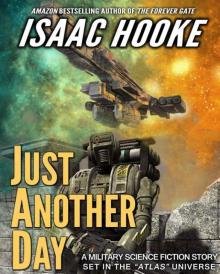 Just Another Day
Just Another Day Star Warrior
Star Warrior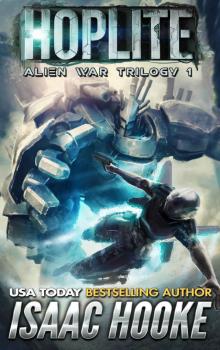 Alien War Trilogy 1: Hoplite
Alien War Trilogy 1: Hoplite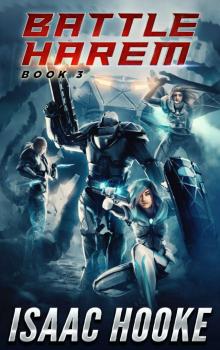 Battle Harem 3
Battle Harem 3 The Ethan Galaal Series: Books 1 - 3
The Ethan Galaal Series: Books 1 - 3 Reloaded
Reloaded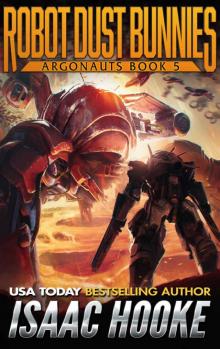 Robot Dust Bunnies (Argonauts Book 5)
Robot Dust Bunnies (Argonauts Book 5) Battle Harem
Battle Harem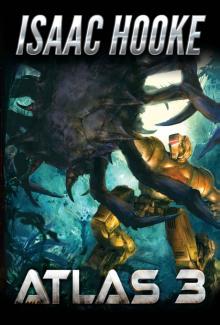 ATLAS 3 (ATLAS Series Book 3)
ATLAS 3 (ATLAS Series Book 3) Argonauts 2: You Are Prey
Argonauts 2: You Are Prey Worlds at War (A Captain's Crucible Book 5)
Worlds at War (A Captain's Crucible Book 5)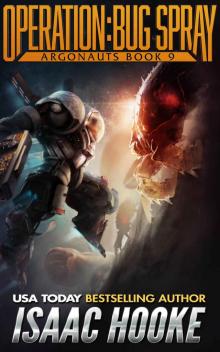 Operation: Bug Spray (Argonauts Book 9)
Operation: Bug Spray (Argonauts Book 9)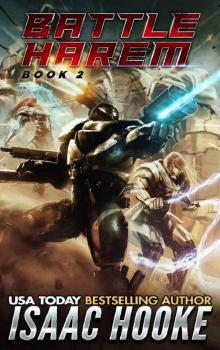 Battle Harem 2
Battle Harem 2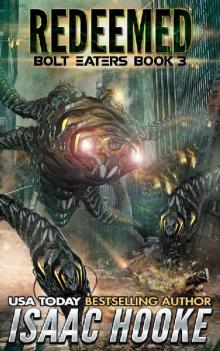 Redeemed (Bolt Eaters Trilogy Book 3)
Redeemed (Bolt Eaters Trilogy Book 3)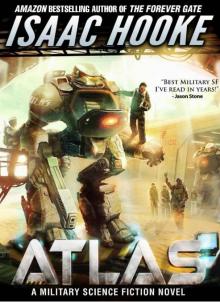 Atlas
Atlas Argonauts 1: Bug Hunt
Argonauts 1: Bug Hunt Reactivated (Bolt Eaters Trilogy Book 1)
Reactivated (Bolt Eaters Trilogy Book 1)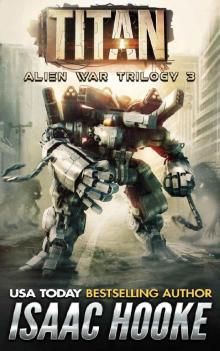 Alien War Trilogy 3: Titan
Alien War Trilogy 3: Titan Flagship (A Captain's Crucible #1)
Flagship (A Captain's Crucible #1)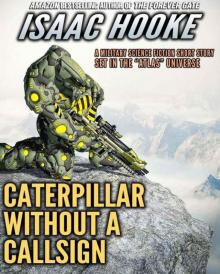 Caterpillar Without A Callsign
Caterpillar Without A Callsign The Forever Gate
The Forever Gate He Who Crosses Death (Star Warrior Quadrilogy Book 3)
He Who Crosses Death (Star Warrior Quadrilogy Book 3) Reforged (Bolt Eaters Trilogy Book 2)
Reforged (Bolt Eaters Trilogy Book 2) Refurbished
Refurbished Reloaded (AI Reborn Trilogy Book 2)
Reloaded (AI Reborn Trilogy Book 2) He Who Crosses Death
He Who Crosses Death Explorations: First Contact
Explorations: First Contact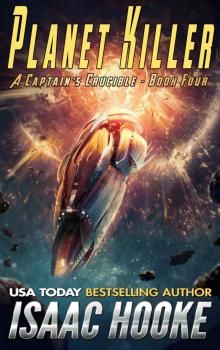 Planet Killer (A Captain's Crucible Book 4)
Planet Killer (A Captain's Crucible Book 4)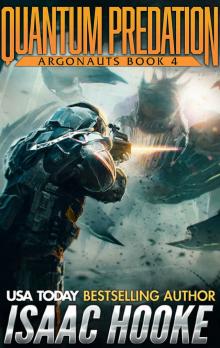 Quantum Predation (Argonauts Book 4)
Quantum Predation (Argonauts Book 4) Clandestine-IsaacHooke-FreeFollowup
Clandestine-IsaacHooke-FreeFollowup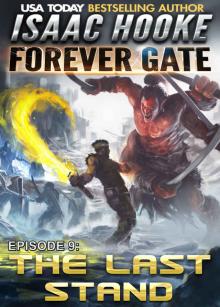 The Last Stand (The Forever Gate Book 9)
The Last Stand (The Forever Gate Book 9) City of Phants (Argonauts Book 6)
City of Phants (Argonauts Book 6) Test of Mettle (A Captain's Crucible Book 2)
Test of Mettle (A Captain's Crucible Book 2) Cradle of War (A Captain's Crucible Book 3)
Cradle of War (A Captain's Crucible Book 3) Rade's Fury (Argonauts Book 7)
Rade's Fury (Argonauts Book 7) Rebirth (The Forever Gate Book 6)
Rebirth (The Forever Gate Book 6) The Forever Gate Compendium Edition
The Forever Gate Compendium Edition Mechs vs. Dinosaurs (Argonauts Book 8)
Mechs vs. Dinosaurs (Argonauts Book 8)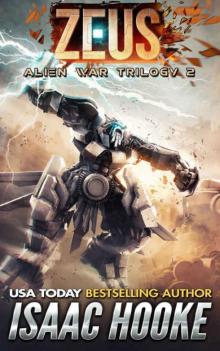 Alien War Trilogy 2: Zeus
Alien War Trilogy 2: Zeus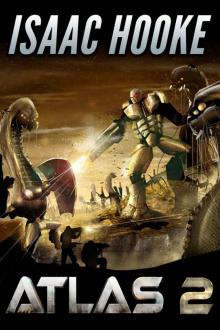 ATLAS 2 (ATLAS Series Book 2)
ATLAS 2 (ATLAS Series Book 2) Operation_Bug Spray
Operation_Bug Spray